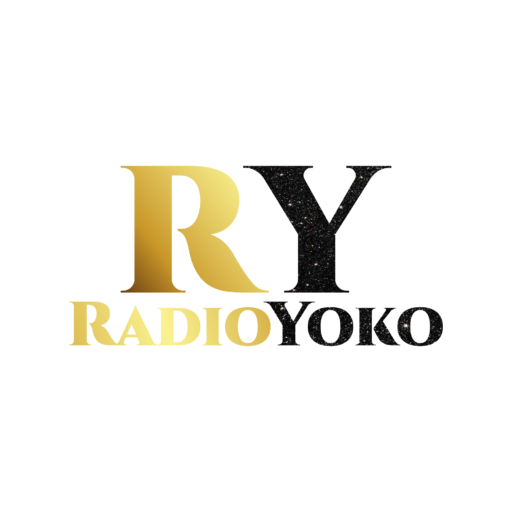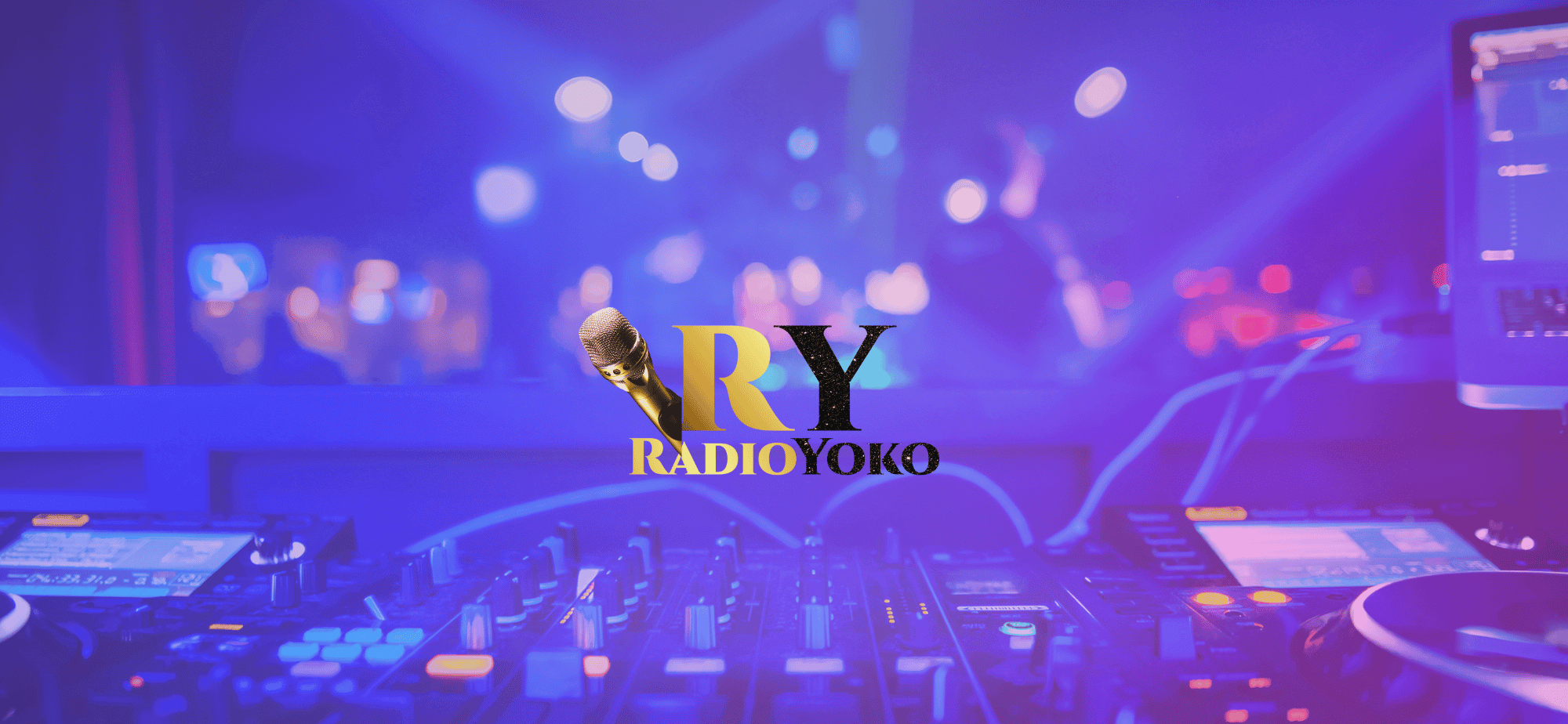The Subways Tour Diary: Days 6-10 the adventure continues
Written by radioyoko on 11/01/2022
The Subways were kind enough to chronicle their North American tour for us, and we’ll be running their tour diary in several installments this week. Billy Lunn will be our guide, and as he writes, “Because so much usually ends up happening on our tours, we thought that this time round, whilst we’re on our exciting US/Canada tour, I’d keep a diary of all our happenings.
As well as being a nice little insight for you guys into our daily lives, it’s also a nice way for me to recap and relive the days as they happen!
Check out entries for Days 6-10 below.
Early start today for a Converse live session, but it was a great excuse to get in a cab and see the sights of beautiful Boston. The wealth of redbrick buildings reminded us of the redbrick of Manchester in our own U.K., which adds a natural autumnal look to the city, and this wonderful quality was compounded by the blue skies and soft, orange sunlight! On our way we passed Harvard Business School on our right, and I wanted to take a detour over the bridge to Harvard Square in Cambridge so I could get a nice feel of what it’s like there. All of a sudden I felt pangs of wanting to study a postgraduate at a Boston uni after I finish my BA at Cambridge—assuming I graduate, of course! Haha! We didn’t take the detour; we like to be punctual!
Handel: A Musical Life of Devotion
Written by radioyoko on 05/23/2016
A great gift to music entered into the world on 23 February 1685 in Halle, Germany. A life of great musical interest; one filled with an unbelievable talent that would become a beacon to many throughout the European continent and span centuries past its lifetime. It is a life that would become centered around a great mystery of how the musical talent would blossom into a recognized and celebrated gift; a life that would alter the musical landscape and the spiritual worship realm in a short 24 days, and a life that would become so influential that it would dictate musical compositions for many years afterwards.
A musical life that in the beginning would find itself struggling to exist; a life that will be forever known in George Frideric Handel. It is through Handel that we credit many great musical accomplishments; accomplishments in the mixture of homophonic and polyphonic textures, through the creation of his own unique works through the process of combining German, Italian, French, and English musical traditions into his highly successful English Oratorios. And most importantly through the lasting effects of Handel’s single greatest gift to the world, and the world of music: The Messiah. But how does the work of this single musician leave such a strong impression on the music that we have today? What could possibly make the music of Handel something that would be hailed as electric, memorable, unique, and even cutting edge? And most importantly how could one person alter the musical idiom through a single twenty-four day creation of a setting of Christ’s life? Through these questions I will explore Handel’s impact on music in a way that shed’s light onto the significance of Handel as a musician, a teacher, and inventor and as a religious preserver. It is with Handel that we credit a great deal of musical advancement.
Adversity in Handel’s life was something that he encountered early on in life. At an early age Handel found himself faced with a father that did not support a career in music, in fact his father was a person that greatly hated music; noting that it was a pastime that served the sole purpose of casting a light on the weakness of character found within a person. It was his father that wished he would strive to obtain a career as a lawyer, a position that would come with a great deal of security in position and financial stability. This was something that Handel himself would have to come to terms with, because he himself was born with “signs of a fierce ambition, born of an awareness of his superiority as a musician, and with a determination to maintain his independence.” This determination to advance his musical skill became a task that took a great deal of hard work and convincing; though it was Handel’s mother that provided access to a clavichord hidden in the family’s attic. The hours spent hiding from his father in the attic, covering the strings of the clavichord with cloth to dampen the sound, allowed young George the time to practice his musical development and eventually the knowledge of how to play both the clavichord and the organ. This early study is most likely what saved the musical career for Handel, because it was during the time stuck in the attic that a young Duke passing by heard young George playing in the attic and was so moved by what he heard, that he stopped to listen. After hearing young George play the organ, the Duke pleaded with George’s father to allow him to travel to Berlin and begin to take music lessons. The young Handel began taking lessons at the age of eight, and was easily able to conquer learning the violin, composition and theory techniques, harpsichord, and reinforce the organ playing skills. By the age of 11, there seemed little that any music teacher could teach George; it was at this point that George’s father began angry and again expressed his desire for George to cease playing in the music, and to return home and do as he wished. Handel at the request of his father did in fact return home, only to arrive at his father’s deathbed. This was a dark period of struggle for the young Handel, compelled to honor his father’s wishes, George decided that it was best to keep to his studies in law; though during this same time he continued to also sharpen the musical skills that he knew he possessed. It was during this time that Handel began to write cantatas for the various churches that he was serving in as an organist. It was the service in music that called out to Handel, and by the time he reached the age of eighteen, Handel had realized that it was in fact his destiny to become a great musician noting that he was destined to improve his musical abilities and his knowledge of music.[…]
How To Market Music: An Effective No-Fail 3 Step Music Marketing Formula That Works
Written by radioyoko on 05/22/2016
How To Market Your Music More Effectively
Knowing how to market your music is without a doubt THE most important thing you can do for your music business and your music career as a whole. You know it’s something that must be handled and if you’re not making efforts to learn how to market your music more effectively then you should know that, at the very least, nothing serious will ever happen in your music business career.
The first thing to ask yourself is whether or not you’re currently managing the most basic elements of an effective music marketing campaign.
What do I mean by this?
To begin it’s important to assess where you’re at right now and determine whether or not you know and understand exactly what the basic components of an effective music marketing campaign are? Let’s face it, if you plan on making a name for yourself in the music industry it’s important to realize you’ll be investing a lot of your personal time and money into your music career. If you’re certain your absolute goal is to mold your music talents into a true “music business” and you have no doubts about the career path you’ve chosen… then you’ll want to be as efficient and productive as you can possibly be.
Most indie bands and musicians whether from the Rock, Hip Hop, Folk or any genre for that matter, tend to work on only one or two of the three essential requirements of effective music marketing. For instance most musicians are great at connecting with audiences. What with Facebook, Instagram, Twitter and YouTube in the mix, communications have become stupid simple for today’s musician.
On the other hand, asking for the sale is occasionally handled effectively but tends to be approached hap-hazardly and without a formula or the necessary accompanying awareness campaigns. This lack-luster approach tends to dampen the efforts of even the hardest working bands and musicians in the industry. Unfortunately, applying only one or even two of these key components without the essential third element in a music marketing campaign won’t bring in maximum returns for the time invested. This just isn’t how to market music effectively.
Don’t get me wrong, getting your name out there and partaking in conversations with fans can be cool, even self gratifying and it’s definitely better than not doing anything at all, but imagine how much more effective you’d be if you went to work on all of these essential marketing aspects of your music business armed with a formula and a pin-point focused purpose.
The Solution To Ineffective Music Marketing
The bottom line is that when you break down the ins and outs on how to market your music effectively, it becomes apparent that as a musician, it’s important to discipline yourself to focus on the elements that are most productive for your music business growth. Broken down in an easy to follow process these elements of music marketing and music promotion essentially consist of a 3 step formula:
Step #1 – Create Awareness: Find an audience who appreciates your music style, your sound and your identity. Take the steps necessary to communicate your musical message to them. Everything you do should create an awareness for you and your music at all times. Approach this with precision and a firm direction and your music business foundation will be solidified for years to come.
Step #2 – Connect with Your Audience: I mentioned earlier how stupid simple it is to connect with fans today. Instagram, Facebook, Twitter, YouTube and the many other online “hangouts” make this process a breeze. Once you’ve laid the initial groundwork and you’ve made your audience aware of exactly what you have to offer, work on maintaining those important on-going relationships with your fans, the media and the all important music business contacts you collect along the way. Your fans and contacts want to know that you’re for real. That you care about them. That you’re here for the long-haul. Making connections with them and keeping them involved in your growth process will ensure this happens for you.
Step #3 – Sell Your Stuff (Ask for the sale): This one is essential. If you don’t have products to sell… you DON’T have a music business. Working to create a steady, consistent cash flow for your music business is paramount to your long-term success. Entice fans to spend their money and buy your stuff and the rest of your music marketing processes will flow and flourish so much easier.
Yes! It’s Easier Said Than Done
I recognize that it’s easier to talk about these things than it is to make them happen in your career but this is what the music business is all about so incorporating these processes into your music business campaign is a must, or you simply won’t last long enough to make dent in the music world.
And that’s not what we want for your music career… is it?
Again, it might seem easy enough to map these things out on paper but the truth is that most bands and musicians will find a hundred and one ways to screw this up.
You’ll either spend too much time on creating awareness and connecting with your audience but then fail to ask for the sale. Or you’ll ask for the sale way to often and forget about connecting with your people. I mentioned earlier that it’s cool to get all gung-ho, get busy, and head on out there and do a bunch of music marketing, but if you’re not touching all three elements of this process on how to market music, then you’re missing the boat and more importantly… you’re fans won’t be “feeling” your vibe. They just won’t connect with you on a deeper level. Without connection, there’s no sales and without sales, you don’t have a music business.
The 7 Different Types of EDM Music
Written by radioyoko on 05/21/2016
As a bassist, bandleader, teacher, and music copyist, I’ve worked with hundreds of singers throughout the years. Though working musicians know hundreds of tunes, singers need to have good charts in order to have their music played the way they want. I define a “good chart” as a piece of written music that effectively tells the musicians what they should play.
Written music comes in seven basic forms: chord charts, sheet music, songbooks, lead sheets, fake books, master rhythm charts and fully notated parts.
As a musician has a responsibility to play the chart before him correctly, the supplier of the chart has the responsibility of providing the right kind of chart. Knowing what type of chart to use for what kind of tune or gig is very important.
This article explains what the different types of charts are, and under what circumstances to use them. I hope you find it useful.
TYPES OF EDM MUSIC
Charts can be simple or elaborate according to the style of music and type of gig. Cover tunes are traditionally learned from recordings; classical and choral music can be found in sheet music stores as well as in various music catalogs; numerous tunes will be found in music books of all kinds; and many public libraries carry recordings and written music for your use.
The word “chart” refers to any piece of written music or any arrangement (music that has been adapted in a unique manner) of a tune. Decades ago it was strictly a “cool” slang term for a tune, but any piece of music could be called a chart these days, though a classical buff might not refer to a Mozart work as a “chart.”
Knowing what type of chart to use for what kind of tune is very important. When you’re playing a gig and someone hands you a chart — it is what it is and you either read it well or not. But, if you buy charts, have them made for you or provide them yourself, you need to know which kinds to use for which situations. Years back, while doing singer showcases, singers brought in all kinds of charts: good ones, bad ones, incorrect ones, inappropriate ones, and it was a real pain. The singers who provided the right kinds of charts got their music played the way they wanted. The singers who had the wrong kinds of charts didn’t, and weren’t very happy about it. Unless a musician already knows the specific parts, he can only play according to what’s on the chart before him. Though a good musician can improvise a good part in any style, if a specific musical line needs to be played, it needs to be written out.
As a musician has a responsibility to correctly play the chart before him, the supplier of the chart has the responsibility of providing an appropriate one.
Without getting into too many music notation specifics, here are the different kinds of charts and when they are used:
1. HOUSE
A chord chart contains the chords, meter (how the song is counted, e.g., in 4 or in 3 (like a waltz), and the form of the song (the exact order of the sections). This type of chart is primarily used when: 1. the specific musical parts are improvised or already known, but the form and chords need to be referred to, 2. to provide chords to improvise over, or 3. when a last-minute chart needs to be written, and there isn’t time for anything more elaborate.
A chord chart does not contain the melody or any specific instrumental parts to be played. To play from simple chord charts a musician basically needs to have steady time, know the chords, and improvise his part in whatever style the tune is in.
2. TECH HOUSE
Sheet music is a store-bought version of a song printed by a publisher, which contains the instrumental part, chords, lyrics, melody and form. An instrumental piece will, of course, have just the music. Sheet music is written for both piano and guitar. Guitar sheet music is in standard notation (often classical), as well as in TAB. A good piece of sheet music will always say whether it’s for piano or guitar. Most sheet music is not meant to be completely representative of the actual recording, and the actual arrangement that you’ve heard on a recording is seldom present.
Many people have experienced the frustration of getting the sheet music to a song they like, playing it, and discovering that the chords are different from the recording, and sometimes the form is too. Unfortunately that’s the way it is a lot, and it could be for a number of different reasons. To get the exact arrangement and chords, you need to do a “takedown” of the song: learn it by ear. A takedown is when you listen to a piece of music and write it down. Takedowns can range from simple chord charts to elaborate orchestral parts or anything in between. In order to do good takedowns, you need to have good ears, understand and be fluid with music notation to the complexity of the type of music you’re working with, and preferably understand music (the more the better). Having “good ears” consists of recognizing and understanding the music, whether heard on the radio, played by another musician, or heard in your head.
3. DEEP HOUSE
Songbooks are compilations of many tunes and often contain the same information that sheet music does, along with the chords and arrangement being different from the recording most of the time. Sheet music commonly has full introductions and endings, whereas songbook tunes are generally shortened to create space in the book for more tunes. Sheet music is generally written to be played on a keyboard, but songbooks come in different styles and for different instruments. They are compiled by artist, style, decade, and in various collections including movie themes, Broadway hits, etc.
Songbooks are a good reference source when other, more exact charts are unavailable. For example: I needed two movie themes for a gig once (client request). Instead of spending $8 for two tunes of sheet music, I bought a book of movie themes for $16 that contained over a hundred tunes. Sheet music and songbooks are pretty unusable at gigs because of cumbersome page turns and bulkiness; but in an emergency you use them and do what you can. If having to use sheet music or songbooks for live performance, either: 1. recopy the tune onto 1-3 pages or 2. photocopy it and tape the pages together (although, strictly speaking, this may be considered copyright infringement). Make sure to always provide a copy for each musician.
To play from songbooks and sheet music, a musician needs to be able to read the music notation, or at least improvise a part from the chord symbols, i.e., a guitar strum, bass groove, piano groove, etc., or better yet, both. A vocalist can sing the words if they know the melody, or be able to read the notated melody if they don’t know it.
4. TECHNO
Lead sheets contain the chords, lyrics and melody line of the song and are mainly used by singers, accompanists and arrangers, though they appear on the bandstand now and again. Songwriters use lead sheets to copyright their songs, and very often sheet music includes a lead sheet of the tune as a condensed version to use. Instead of having three to six pages of sheet music to turn, a lead sheet is usually one or two pages long. Lead sheets do not contain any music notation except the melody and chords, so a musician needs to know how to improvise when reading from one. A lead sheet is generally written out by a music copyist, who is someone who specializes in preparing written music. Playing from lead sheets minimally requires playing an accompaniment from the chords and understanding the form directions and symbols (the markings telling you to go to the verse or the chorus or the end, etc.) and maximally having excellent accompaniment skills and reading notation fluidly.
5. ELECTRO
A fake book is a large book of tunes that contain only the melody line, lyrics and chords. There’s no piano part, guitar part or bass part. That’s why they call it a fake book. You have to already know your parts, or improvise them in the style of the tune. Some people call that “faking it.” Faking it means to be musically adept enough to be able to follow along by ear and figure it out as you go: that’s one of the reasons for ear training. When a person’s ears “get trained”, they learn to recognize and understand the relationship of pitches and musical elements. With this understanding you can “hear” your way through tunes, even if you haven’t heard them before, you fake it. However, when you don’t hear so well, you’re really faking it!
Before there was an abundance of legal fake books on the market, there was an abundance of illegal fake books on the streets. (As of this writing, I’ve only seen a few at gigs.) Since a working musician needs to have access to a large number of tunes at gigs, musicians compiled books of hundreds of useful tunes containing only melody lines and chords. A working player doesn’t need all the notes written out, because he can improvise, so large books were made with choice tunes. Some fake books are hand copied, either by a pro copyist or casually done with pen or pencil, while others consist of cut up sheet music where all the piano parts are removed, leaving the melody and chords, all for the purpose of condensing space.
Rather than take stacks of songbooks to gigs, you pop a fake book of hundreds of choice tunes into your gig bag and off you go. A tune taking up five or six pages in songbook/sheet music form can take up a page or less when rewritten by hand or cut up, leaving only the chords and melody. Fake books are often used and I’ve seldom been at a casual where someone hasn’t had at least one.
The reason the illegal books are illegal is copyright laws. With the homemade books, nothing goes through the publishing houses that own the rights to the tunes, so neither the publishers nor the composers get paid for their use. The Catch-22 over the years has been the fact that there weren’t any good legal fake books that pro musicians could use at a gig. In a songbook of 200 tunes, maybe ten were usable. So, the players made their own, and gigging musicians lived happily ever after. But since making these books is illegal, some decades ago a few nationwide distributors were arrested and fined for copyright infringement. But you still see the illegal books on the bandstands, nonetheless.
Over the years many legal fake books have been published and are very good. There are music books for: pop, jazz, rock, country, specific artists and movie themes, and there are special wedding books with all the key music that brides like. Big sheet music stores should have them all. And recently, some of the most popular illegal fake books have been made legal. (Hooray!) The 5th Edition Real Book is an example. Filled largely with jazz tunes, the book is in the original format, but published legally as the 6th Edition Real Book.
Legal fake books are plentiful at sheet music stores, and illegal books… well, you’re on your own. Trade magazines and music union papers often advertise a wide variety of music books as well as joke books, ethnic music and other related entertainment materials. Sometimes instrument stores carry fake books as well.
Fake books are good to have, but the more tunes a musician knows, the better.
6. DEEP TECHNO
Master rhythm charts are charts designed for the rhythm section (piano, bass, guitar and drums). It is one chart that contains the general idea for everybody to play from: a sketch of the tune, a master copy of it all for each player. These charts are like elaborate chord charts with just enough specifics on them to make the music either feel and sound more like the original recording, or to provide just enough specifics to make it interesting and recognizable, leaving the rest to improvising.
Unless a tune is composed or arranged in this style to begin with, which many are, these charts are written by someone doing a takedown from a recording, or created from lead sheets or songbooks. Whereas lead sheets are primarily for the singer, master rhythm charts are primarily for the musicians. When a singer provides charts to the musicians in the band, these are the usual ones to use.
A master rhythm chart contains:
• All the chords
• Key rhythms (the main rhythms)
• Key melodic parts for the instruments
• Key lyrics for reference if desired
• Key background vocals if present
• Dynamics-how loud, how soft, etc.
• Any form, clarifying instructions and symbols needed to ensure a good performance of the tune.
All styles of popular music use master rhythm charts, and it’s common to have one along with a lead sheet for each tune when a singer is involved. Master rhythm chart reading, and writing, entails improvising fluidly in the style of the tune, and requires fluid notation reading abilities.
7. CHILL OUT
When the music needs to be extremely specific it will be fully notated. Everything that needs to be played is written on the page. What to play, when to play it and how to play it: the notes, rhythms, dynamics, and any and all notational expressions, such as tempos (how fast or slow), who cues what, etc. Most professional recording sessions and shows require fluid note reading and provide individual parts for each instrument.
LYRIC SHEETS WITH CHORDS
Though they are not written music, lyric sheets with chords deserve a mention.
Singers who play an instrument often use lyric sheets with chord symbols written above the words. For a singer/musician these are very useful, and are often used. I’ve used them myself.
Musicians reading these charts, however, can do well if they are familiar with the song, but this leaves a very large margin for error. Very often the chords are over the wrong words, or the chords are wrong or incomplete: very dicey business. Musicians like specifics.
My students use these all the time, and there are a number of Internet sites with thousands of lyric sheets you can download. For certain situations they are very handy!
How To Gain The Power To Create Musical Emotion
Written by radioyoko on 05/21/2016
Have you ever wondered how your favorite musicians make such great music? The answer is this: They fully understand how musical emotion works, and how to use this to create intense emotions in YOU while you listen to them. Understanding musical expression is key to becoming a great guitar player and musician. When you control emotion in music, you will gain the power to greatly affect the listener’s experience.
Most guitarists want to be able to express themselves better with their guitar playing; however, the majority of guitar players have no idea how to actually practice this skill. This leads to a lot of time being wasted on practicing guitar in a way that does not produce big results. The solution to this problem is to develop a more accurate fundamental understanding of how to develop creativity in music.
Many guitar players try to enhance their musical creativity skills by searching the music of their favorite bands for cool riffs and guitar ideas and playing them over and over. This is certainly an enjoyable activity to do when playing guitar, but in reality it does not do very much to help you to learn musical expression. If you spend a great deal of time on this, you will be missing out on the two most critical parts of being able to create emotion in music.
















